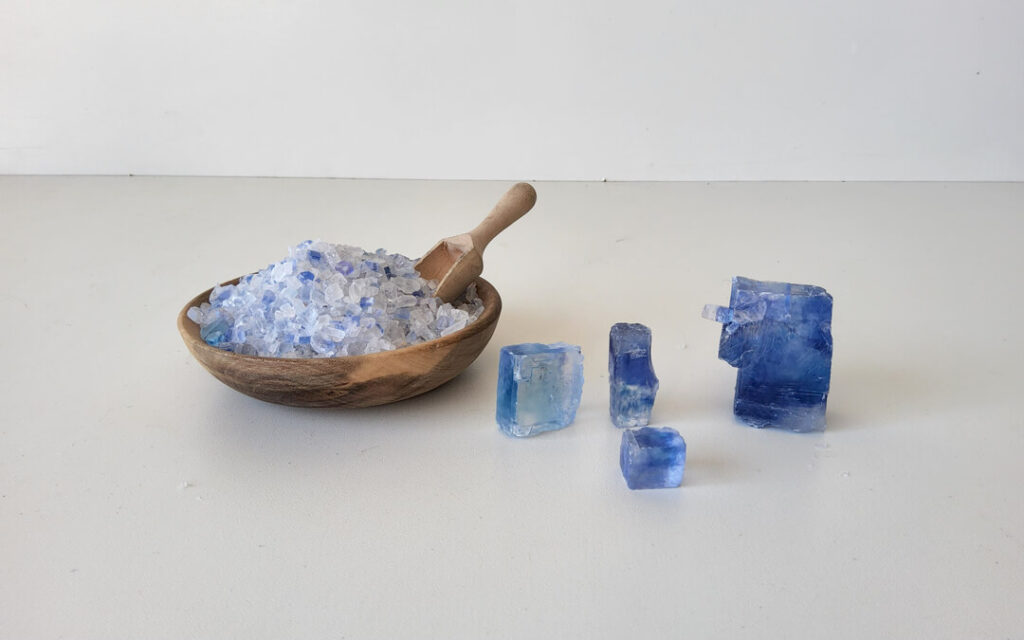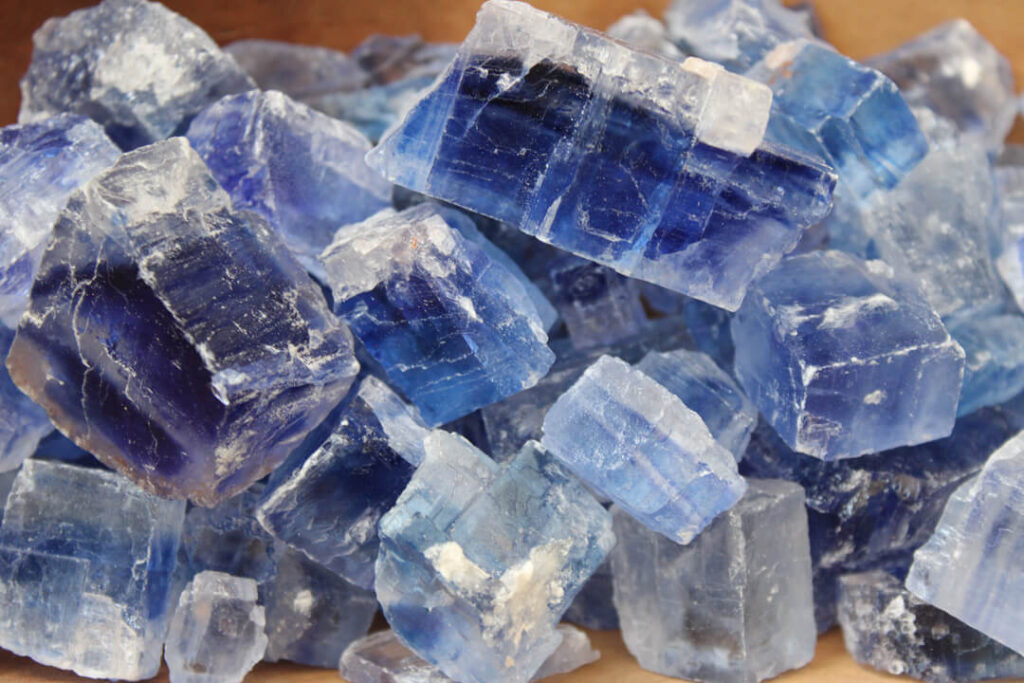Iranian Blue salt, one of the rarest naturally blue mineral salts, has attracted significant attention from researchers worldwide. In recent years, prestigious universities in the United States and Europe have conducted extensive studies on its chemical composition, crystal structure, and physiological properties. These findings have been published in international scientific journals.
Chemical Composition and Crystal Structure
A 2022 study by the University of California employed X-ray diffraction (XRD) and electron microscopy to analyze Iranian Blue Salt. The research revealed that the salt primarily consists of potassium chloride crystals (sylvinite). Over millions of years, natural geological processes and radiation caused “color centres” within the crystal lattice, producing the salt’s distinctive blue hue.
Mineral Content and Nutritional Benefits
Advanced chemical analysis conducted by Harvard University in 2023 demonstrated that Iranian Blue salt, in addition to sodium chloride, contains significant amounts of potassium, calcium, magnesium, iron, and zinc. Potassium in the salt helps regulate blood pressure, while calcium and magnesium contribute to bone health and nervous system function.
Physiological Effects and Health Applications
Researchers at the University of Oxford performed a 2023 study indicating that due to its unique mineral profile, Iranian Blue salt may enhance immune system function and reduce oxidative stress. The salt is also free from common allergens, making it safe and natural for use in cosmetic and health industries.


